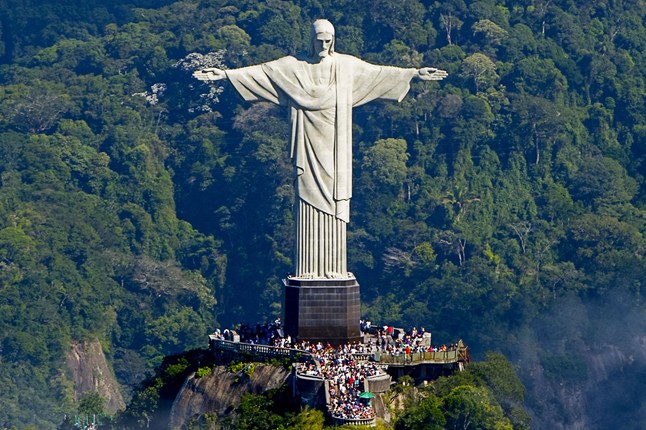magical place


The Statue of Christ the Redeemer (Portuguese: Cristo Redentor) is the largest statue of Jesus Christ in the Art Deco architectural style and is located in Rio de Janeiro, Brazil.The statue is 38 meters high and is located at the top of Corcovado Mountain which is 710 m high in the Tijuca Forest National Park, which overlooks the city.This statue became a symbol of Christians, and a symbol of the pride of the city. The open arms of this statue are seen by many as a sign of the cross.
The idea to build a large statue at the top of Corcovado had emerged since the mid-1850s, when Catholic priest Pedro Maria Boss asked for funds from Princess Isabel to build a large religious monument. Princess Isabel did not respond to the idea, which was then completely forgotten in 1889, when Brazil became a republic, with laws requiring the separation of the church from the state.
The second proposal for a large landmark in the form of a statue on the mountain was made in 1921 by the Archdiocese of Rio de Janeiro. The Archdiocese organized an event called Semana do Monumento ("Monument Week") to attract donors, who are mostly Brazilian Catholics. The designs considered for the "Statue of Christ" include a representation of the Christian cross, a statue of Jesus with a globe in his hand, and a pedestal that symbolizes the world. Finally the statue of Christ the Redeemer with his chosen open hand.Christ the Redeemer is one of the finalists for the seven new wonders of the world, together with 20 other candidates.
In 1990,
several organizations, including the Archdiocese of Rio de Janeiro, media
company Grupo Globo, oil company Shell do Brasil, environmental regulator
IBAMA, National Institute of Historic and Artistic Heritage, and the city
government of Rio de Janeiro entered an agreement to conduct restoration work.
More work on
the statue and its environs was conducted in 2003 and early 2010. In 2003, a
set of escalators, walkways, and elevators were installed to facilitate access
to the platform surrounding the statue. The four-month restoration in 2010[26]
focused on the statue itself. The statue's internal structure was renovated and
its soapstone mosaic covering was restored by removing a crust of fungi and
other microorganisms and repairing small cracks. The lightning rods located in
the statue's head and arms were also repaired, and new lighting fixtures were
installed at the foot of the statue.
The
restoration involved one hundred people and used more than 60,000 pieces of
stone taken from the same quarry as the original statue. During the unveiling
of the restored statue, it was illuminated with green-and-yellow lighting in
support of the Brazil national football team playing in the 2010 FIFA World
Cup.
Maintenance
work needs to be conducted periodically due to the strong winds and erosion to
which the statue is exposed, as well as lightning strikes. The original pale
stone is no longer available in sufficient quantities, and replacement stones
are increasingly darker in hue.

Comments
Post a Comment